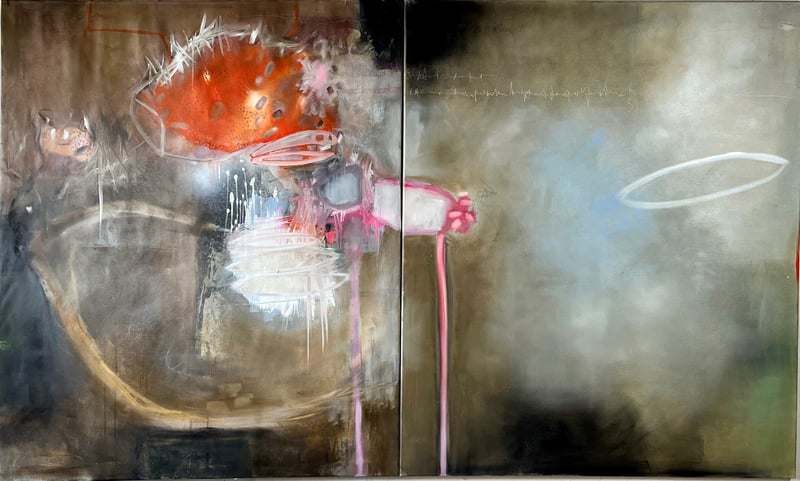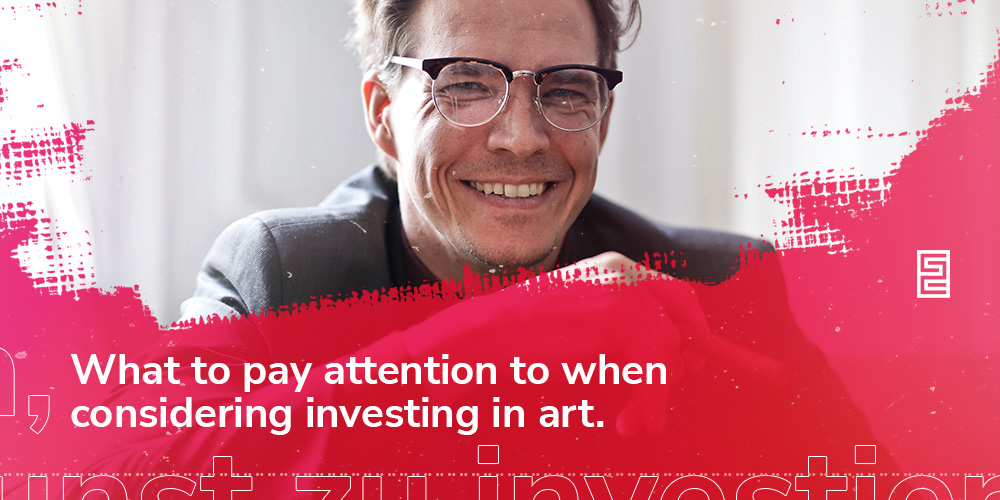A Guide To Becoming An Art Collector
“Art is standing with one hand extended into the universe and one hand extended into the world and letting ourselves be a conduit for passing energy.”
– Albert Einstein
Building an art collection is more than just a series of deliberate choices. It is personal - a journey of discovery, a lesson of exploration for each individual. We will even go as far as to compare it to an evolutionary process in that over time, you’ll be privy to viewing a unique progression of taste and preference. Because it is an intimate advance - there is no right or wrong way to collect art.
That being said - there are certain milestones that each new collector should aim to achieve, in order to make the most of their collection. In this blog post, we will address the most important aspects that you should consider when building your collection.
The desire to modernise your culture and mark a new stage in your life may lead to the ambition to collect art. You may have just purchased your first home and would like to add a beautiful work of art to your living space that you can appreciate every day. On the other hand, you may have always wished to begin a substantial art collection that will grow in value and become a profitable investment over time. Whatever your motivation for starting to collect art is, you will need some professional guidance to prepare for this undertaking.
Start where your heart is.
Starting an art collection does not have to be difficult. There is much to learn, but you can take proactive steps to acquire original artworks that you adore without paying exorbitant prices. Consider your art collecting strategy to be similar to assembling a network of like-minded team members. You'll need a dynamic and multi collection of players united in pursuit of an aspiration greater than the sum of its parts. In a fractured world economy, where global stress is rife, and commiseration takes preference over reprieve - art represents something greater. You'll be looking for this team and the opportunities they represent in galleries, auction houses, online, artists' studios, and other creative environments. It is critical to contextually shape your collection as part of this process so that you can be discerning and tactical in what you acquire.
Art is a doorway to another dimension - one of beauty, acceptance and tolerance. The art collector is one of notoriety, one who appreciates beauty and aims to create a safe space to enjoy the charm that drips off an artist's tools.

There is a significant distinction between purchasing art and collecting art. Buying art is a more haphazard action based on likes, preferences, or attractions at any given time, whereas collecting art is a more deliberate and long-term commitment. In both cases, you procure what you want, but if you want to collect art properly, you must learn two additional skills. The first is the ability to effectively research, evaluate, and start deciding whether or not to purchase whatever works of art pique your interest. The second requirement is the ability to select each independent work in such a way that it forms a meaningful grouping, referred to as a collection.
Here are some things to consider when deciding on a direction for your collection.
- Define your objectives.
What are your plans for this art collection? Clarifying your motivation or goals for acquiring art will have a significant impact on the type of collection you end up crafting. A good strategy is to invest in what you enjoy and brings you joy. Because you will have to live with the art you buy, it is best to invest in something that will empower you every day. - Establish your scope.
The first assessment any piece should go through is the most basic—do you like it? First and paramount, your collection should reflect your preferences. Every collection would look the same if every collector blindly followed what was popular and considered significant. The distinct variables you establish at the start will give your collection a sense of continuity in the long run. - Do your research.
Immerse yourself in the art world and do some research to make sure that you have a pleasant experience collecting art! Explore a range of artworks, mediums, and styles; research artists, visit museums and galleries or look for artworks you like on social media (Instagram, Facebook, Pinterest, etc.). As you see more art, you will begin to understand the aspects of various techniques, mediums, and styles employed by various artists. Most notably, you will train your brain and eye to recognize the types of art that you prefer. - Commit to the longevity of your collection.
Collecting art in any form is to be considered an investment. Not only are you updating the style and culture of your home, but you are also investing in the future value of your collection. Whether you’re renting or buying - the investment opportunity is present. - Explore the possibilities.
Exhilarating art is more accessible than ever before, so don't limit yourself to what's fashionable right now. Go out there and find the next big thing for yourself! - Consider the fit.
Keep in mind that you are purchasing art to showcase in your home and that you will be looking at it every day. As a result, you may prefer to concentrate on more visually appealing artwork rather than investment pieces. A well-chosen art collection, as per Dina Zhang, a Hong Kong-based art expert, should reflect the style and tone you've envisioned, whether it's richness, drama, or bright, show-stopping colours. As a result, works from different periods of art history, such as oil paintings and mixed media ensemble pieces, can exist simultaneously in the same space as long as they fit the owner's aesthetic vision.
If you want to have any sway over the long-term future of your collection, you should start laying the groundwork right now. Inform your family about your assets. Instil pride in what you've achieved and acquired over the years. Make certain that those close to you are conscious of the importance and significance of your art. Make it clear to them how important it is to you. You can't change the outcome, but you can have your say and know you did your best to collect like a pro.




